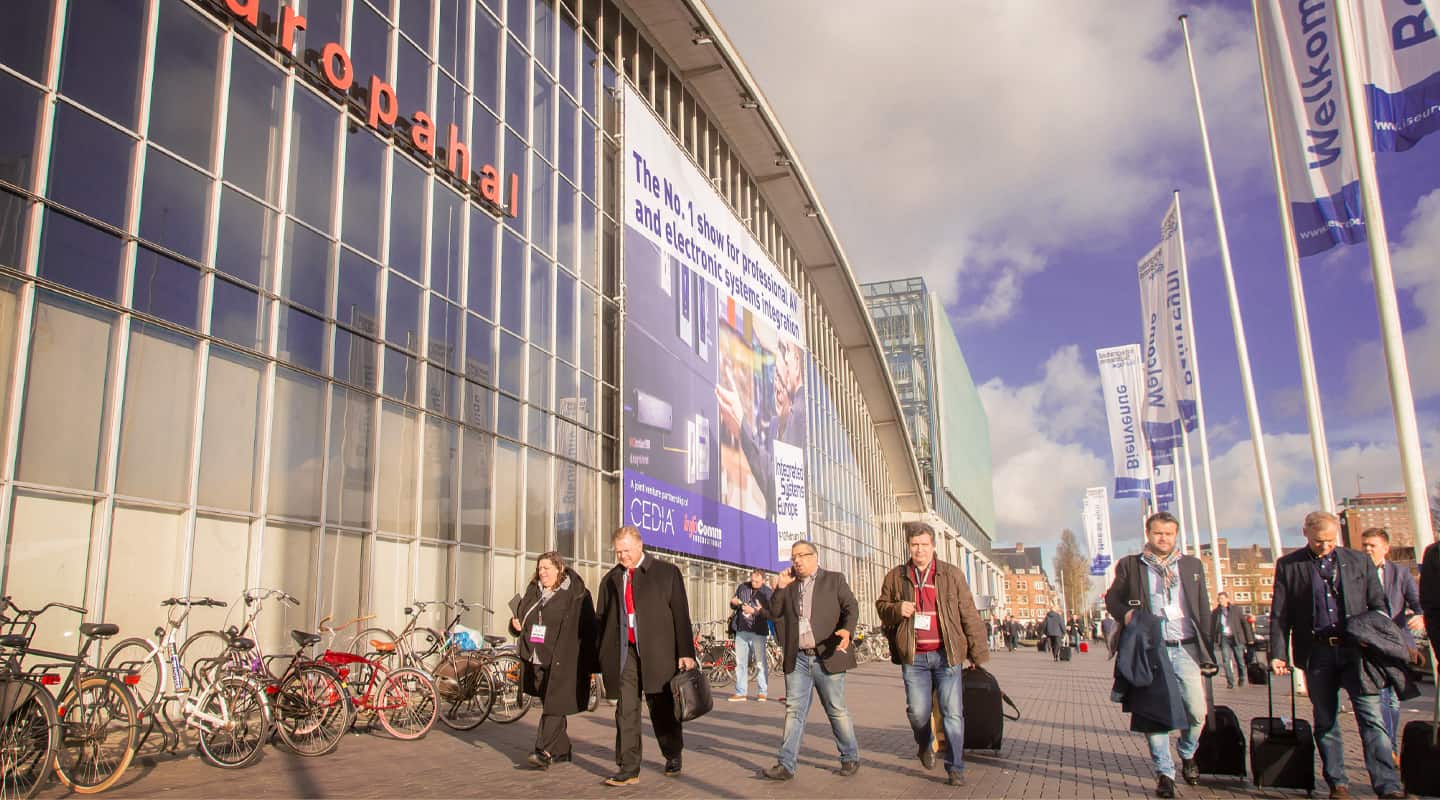
ISE 2016: Postcard From Amsterdam
Industry veteran Paul Van der Ent shares his impressions of the world’s biggest AV show.
Text:/ Paul Van der Ent
People love the ISE show and I can see why. This year was my first but, of course, I’ve maintained an interest in previous ISE shows and was intrigued to see and hear for myself what all the fuss was about. And I loved it. I like it because of the full range of manufacturers.
With some 1200 manufacturers you really feel like you’re talking to the organ grinders rather than the monkeys. At the US InfoComm shows there tends to be more US representatives fronting the stands. I found at the ISE that if I had a technical question I was given time with the engineer.
In the US I’ve also noticed they tend to be more technically insular. They know their product but don’t know so much about others in the eco system you’re working in. The Europeans tend to understand the real-world situation their products are going into a little better, rather than assuming you’re going to be spec’ing everything out of their catalogue.
THEME NO. 1: AV OVER IP
The biggest theme of the show was AV over IP. The move to software, which has been coming in this industry forever, is very clear because IT people can’t get their heads around AV, while AV people have to get their heads around IT. The big players didn’t have anything earth shattering to show in this regard. AMX, Crestron, and Extron are selling proprietary boxes — they have some cross-platform features but they’re still proprietary boxes. Meanwhile, gear using the AptoVision BlueRiver chip are open platform and will sit on the network, on virtual servers, and will be managed by the IT department, because it’s something the IT guys understand.
Using AMX as an example, you have to buy the AMX RMS to do all your room management and to build a room booking system, but because the AptoVision guys are already on the network/virtual server, they’ve already got the ability to connect straight in via Outlook, etc. And they’ve also built reporting and security into their systems. And you’re getting that in the cloud. How good is that?!
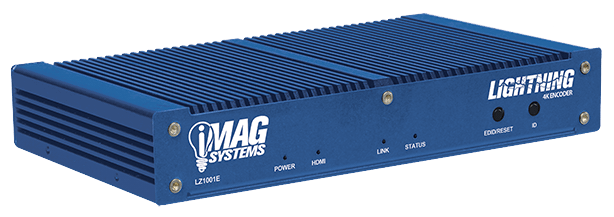
APTOVISION: 20/20 VISION?
AptoVision is in an enviable position. It doesn’t have to worry about keeping its factory production line ticking over in the background to make money. These guys can sit in a small office in Toronto with a bunch of software developers, and come up with something really good. They don’t have the history of needing to spruik hardware.
Maybe the question is: why hasn’t AptoVision shaken the AV industry industry to the core already?
In Australia the issue is the network infrastructure. This is where AV and IT need to develop infrastructure together — especially if you’re utilising the streaming model. Bandwidth is the biggest issue. Take a school or uni campus with 500 students. How many wi-fi devices are going onto the network at any one time? Lots. It’s a big challenge for small- to medium-sized schools to deal with. The cost of scaling up to deal with the extra bandwidth is significant. You’ve instantly gone from using a network switch that is $3500-$4000, to, if the school wants a good one, something that’s $20-$30,000. And even then, when you talk to the school’s network engineer, they’ll suggest you still need headroom, leaving video over IP only 25% or 28% of the available bandwidth. This is the reason why AV over IP still remains on a separate network or on the VLAN. That’s fine but you still need the infrastructure.
AptoVision may have the better technology — uncompressed, no latency video over a standard 10Gb IP network — but we’re still years away from having the IP network infrastructure able to handle that amount of data.
Saying that, the extra cost of the better infrastructure will be IT’s problem — the IT guys will be asking for the better networks rather than the AV guys. And we know that, often times, what IT wants, IT gets.
SHOOTOUTS: PLAYING NICE
The regulations in the US mean you don’t see head-to-head shootouts at tradeshows, because of the fear of being sued. At ISE we saw more shootouts — some good, some bad… and a few were downright scandalous. I saw one shootout where the competitor’s projector was ‘detuned’ while their own products were tricked up to the max (I checked when no one was looking!). If you’re going to run head to heads, c’mon, set the product up as it ships straight out of the box.
Conversely, Panasonic did what I consider to be a fair head-to-head in a demonstration room with a four-screen video wall — each screen was factory reset. The aim wasn’t so much to show how rubbish the other products were but the differences between them thanks to different manufacturing methods at a price point.

INTERNET OF THINGS
ISE’s opening keynote address was heavy on the significance of AV’s role in the internet of things (IoT); how AV will be essential in making sense of an endless array of sensors and network devices.
I think Australia’s internet infrastructure is a choke point. In Europe, America and parts of the Far East, you’ve got the population that warrants investing in the infrastructure. In Australia you’ve got 24 million people, and in a huge space, and the infrastructure is still difficult because of the NBN. If one is to make a comment about the NBN: why didn’t they lay cable in the business areas first rather than the regional areas? At least that way they could have the money and take up coming from business to help pay for the rest of the network.
So we have all these great new products that sit on the Internet… now what?
The IoT is still very important, but when you’re talking to people at ISE their eyes startle when you tell them ‘we only have ADSL’, or how some of our biggest companies still have links under 10Mbs.
Just has a look at VC trends. VC video is often diabolical, but has to be to deal with the available bandwidth. And the market doesn’t much care, so long as they can make the call on their iPad or smartphone.
HUDDLE SPACES
The huddle space has become very important, very quickly. Business is looking at its big meeting rooms packed with sophisticated VC and noticing these rooms aren’t getting used much or being occupied by four people rather than 12. So, the big room is being broken down into two or three huddle spaces. The room needs a software codec — such as the Google platform or Skype Business etc — a smaller monitor and, bingo!, you have a quick and cheap way of communicating. Client-facing rooms will remain larger and more impressive but in-house rooms are all four- or five-person huddle spaces.
The best huddle space AV box I saw was the Biamp Devio [see our review later this issue]. This was one of the smartest moves I’ve seen from a manufacturer in a long time — they’ve really got that one right.
The success of Devio comes with Biamp really addressing the challenges of huddle space AV by thinking: ‘this thing has got to set up really quickly’. They’ve developed a system that has the minimum amount of cabling and a really good piece of audio. People are all talking about 4K video forgetting you can do without video entirely and still run a conference but you absolutely need audio. So Biamp has attacked it from the audio perspective. One of those huddle rooms with a screen shouldn’t take any more than two guys three hours to set up, all with a minimum of cabling and a minimum of tools. That was the Biamp thought process and it’s very impressive.
“”
the IT guys will be asking for the better networks rather than the AV guys. And we know that what IT wants, IT gets

QSC SHAKES IT UP
QSC has been around for years, and has for many years been the leader in the application of DSP and moving audio about in large installations. Rich Zweibel invented Cobranet and heads up QSC’s QSys, with QSys the preferred system in just about every Disney theme park… Warner Bros Movieworld uses it on the Gold Coast as well. It’s a product that works; it’s enterprise grade. So it’s interesting to see QSC begin to move into the world of SMB, and they’re beginning to rattle a few cages. The reason is QSys provides proper control over audio — it’s a fabulous IP transport system. Now you’ve got companies like BSS making their systems QSys-capable, and that’s a trend that’ll continue. Audio is a very big component of anything we do and traditionally it has not been given enough priority. Saying that, I think this is the first show where I’ve felt that audio has been properly prioritised.
LASER BATTLES
It’s been interesting to see the large projector manufacturers frantically releasing lamp-free product. Laser projection is still young enough for the jury to be out. I noticed market progenitors, Casio, had a spot on its stand for one of its projectors that was 18,000 hours into its promised 20,000-hour half-life, but mostly we don’t know how long these projectors will last. I think there’s a smaller battle of terminology going on: ‘lamp free’ isn’t ‘maintenance free’ — the two are not the same, they mean two different things. The lamp-free device means you don’t have to change the globe. But let’s not forget that there are filters that need to be cleaned every so often, so it still requires maintenance. The projectors that are ‘maintenance free’, and I can only point to Panasonic in this case, use a completely sealed unit, so you don’t have to go up and change anything. Universities are probably the biggest customers of lamp-free projection. But if you’re hanging a projector 15m up into a school hall, you really want maintenance-free operation, not just lamp-free.
Older laser projection also suffers from colour degradation. You may not need to change the lamp, but you may well need to change the phosphor wheel, or put up with much degraded colour performance.
There’s a cost to all this, and warranty implications.
LED: HERE’S THE PITCH
There was a lot of companies doing really interesting stuff with LED. The pixel pitch size has really come down. The smallest I saw there was 0.95mm, but even at a 2.75mm pixel pitch (an unimaginable figure only a few years ago), well, that’s still pretty impressive. People are doing a lot of architectural features with LED — I noticed plenty in the Euro airports, for example — and using the technology well.
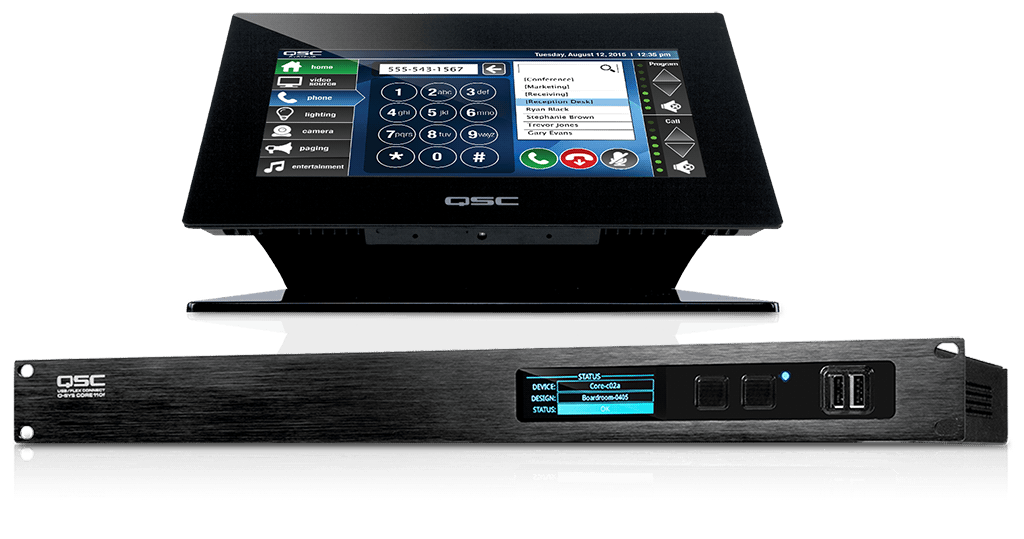
BIG DISPLAYS
LG had the standout booth at ISE. LG captured the imagination of everyone with its curved and double-sided OLED displays — everyone was talking about it. LG used very saturated images on its OLED screens… and why not? They look brilliant. But give us a price, we want to buy OLED now!
Samsung had its own hall but weren’t as impressive. There was the clear video wall — a nice option… but is it available? It’s amazing how many customers think the world of Hollywood and HBO is reality. ‘No sir, you can’t have a giant transparent wall on which to conduct your investigation, a la CSI.’ Not sure if Samsung is helping our cause of managing expectations or not!
As for OLED, let’s just get our hands on it as soon as possible. The biggest problem we have with screens and installing them is the weight and the size of the screen. The first problem with taking a 90-something-inch screen (or even a 75-inch screen) into a multi-storey building, is fitting it into the lift. Then it’s got to get out of the lift and around the corner and probably be mounted on a stud wall, which is not going to take the weight and requires reinforcement. Along comes OLED, and I could even use double-sided tape to stick it to the wall. If I don’t want it there I can use removable double-sided sticky tape and put in the next room when required. The weight is akin to hanging a picture on the wall.
How does it work in other applications? Clear-glass ‘whiteboards’ are popular at the moment — where you ‘write’ on the glass overlay with the screen behind it. OLED will be great for that application. Foyer art is another big area. And I understand LG is planning on releasing OLED screens with a multi-touch overlay as a bundle, which would be very well received.
ONCE IN A 10-YEAR SHOW
My parting impression of ISE was it had a lot more design and creativity about it. The Americans don’t mix product too much but the Europeans pick the right product for the right job, and it doesn’t matter what the brand is so long as it is the right product for the application.
I’d go as far to say that I think ISE 2016 was one of the most important shows the industry’s had in the last 10 years: the sheer number of attendees, the number of exhibitors, and the ability to talk meaningfully with the exhibitors was awesome.
And to return to the key theme of AV over IT: I agree wholeheartedly with the sentiment expressed at the recent AMX/AVT conference. If companies aren’t getting IT staff on board, they’re in trouble. A show like ISE has to reflect how we’re changing as an industry and I believe it does, that’s the feedback I was hearing from international integrators. For example, I chatted to the head of one large integration firm in Europe who had fired all his AV sales people — he now has only IT sales people selling AV. And he has 200 of them on staff. But the key is, they’re getting into clients’ IT departments and talking to the IT guys and walking away with sales that don’t go to tender and don’t go out to quote, they’re just happening because the IT department was happy. As this man said: all his IT guys know how to talk to the CTO and get to the right person. Sure, he has to educate these ex-IT sales guys in the ways of AV and he has to maintain his core group of AV engineers in the background, but he’s having great success.
Changing times.
Paul Van der Ent’s opinions aren’t necessarily shared by the publisher. If you would like to yell at Paul, email the editor (chris@avapac.net) and he’ll (happily) pass it on.
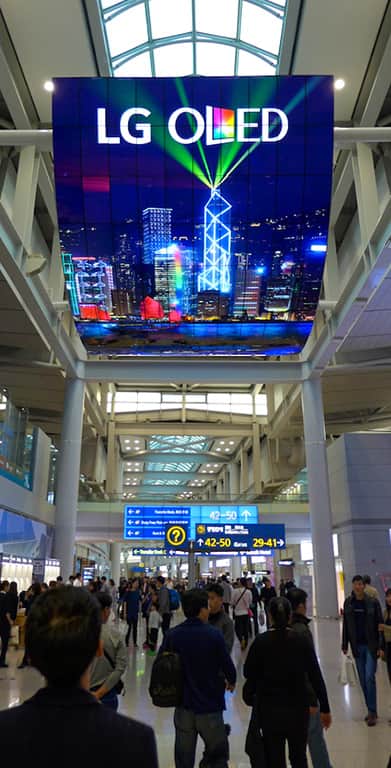



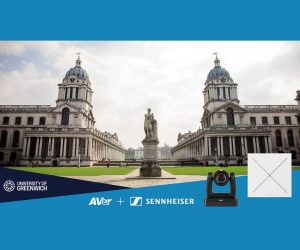
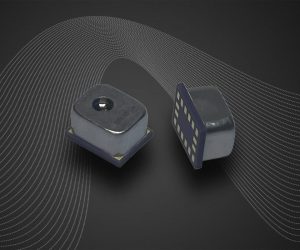
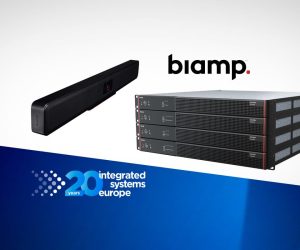



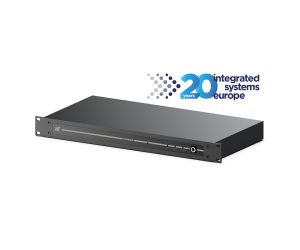
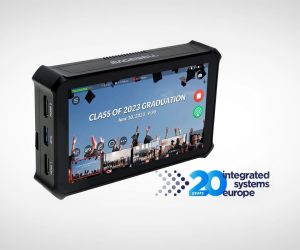




RESPONSES